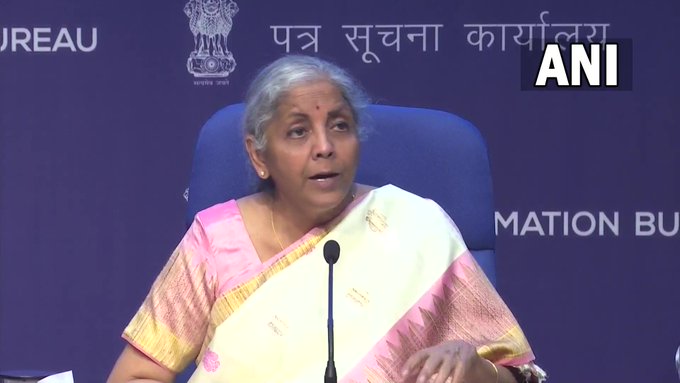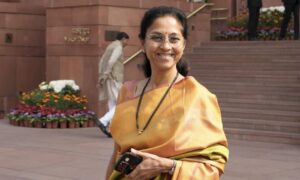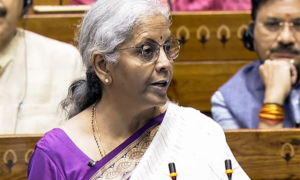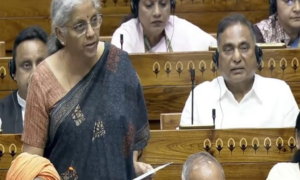
Picture : Twitter / ANI
With Nirmala Sitharaman’s budget presentation lasting for about one hour 31 minutes on Tuesday, the Finance Minister’s budget speech this year became the shortest ever since 2019.
Last year, Sitharaman’s budget speech lasted for about one hour 48 minutes, while in 2020, it went on for 2 hours 40 minutes, which was the longest speech ever. In the year before that, the speech was 2 hours 17 minutes long. Sitharaman presented the Union Budget 2022-23 in the Lok Sabha today during the Budget Session of Parliament.
Meanwhile , in response to questions on her Budget belying expectations of a reduction in the income tax burden on the middle class.
Nirmala Sitharaman’s fourth Budget in a row neither tinkered with tax slabs nor raised the standard deduction, which was widely expected in view of elevated inflation levels and the impact of the pandemic on the middle class.
“If the expectation was to raise tax, I haven’t done that,” she said at a post-Budget press conference when asked about the Budget belying expectations of the middle class.
“I hadn’t done that (raise income tax rates) last year (and) this year too,” she said.
“I have not collected a single rupee additionally through tax burden.”
She said last year the prime minister directed that fiscal deficit should not be a concern during COVID-19 and “there should not be additional tax burden during the pandemic”.
The government has taken to the spending route for the recovery of the economy from the massive disruption the pandemic has caused during the last two years.
“We have not attempted to address the challenges caused by pandemic by increasing tax,” she added.
While the standard deduction on personal income remains unchanged at Rs 50,000, there was no change in income tax slabs in the Budget unveiled on Tuesday.
The corporate tax rate too was kept at the same level.
However, the concessional rate of 15 per cent has been extended for newly incorporated manufacturing units.
“There are times when you can give. There are times when you have to wait… But a lot of things have been done for the middle class,” she said, as she narrated the ripple effect the spending on infrastructure, rural and agri economy and housing will have in generating additional income for the middle class.
[the_ad id=”41099″]


















